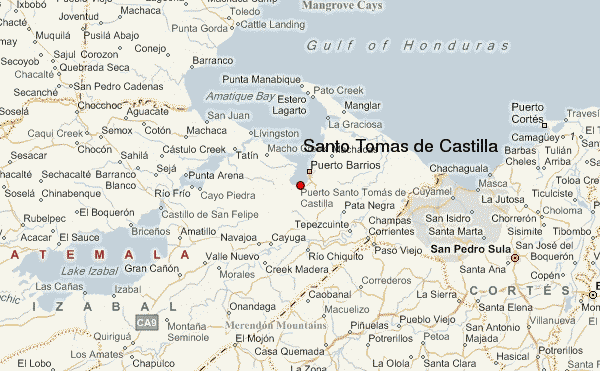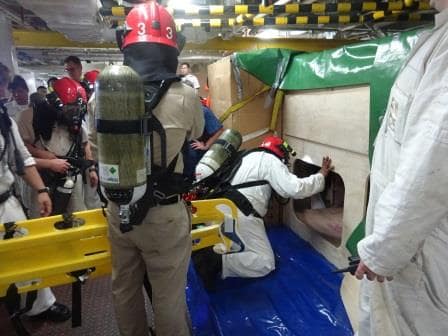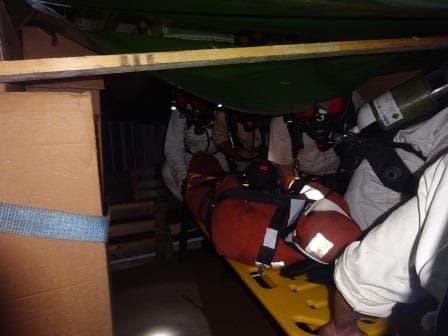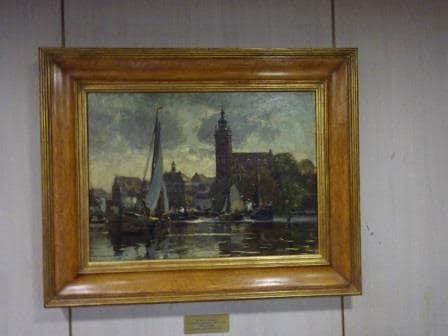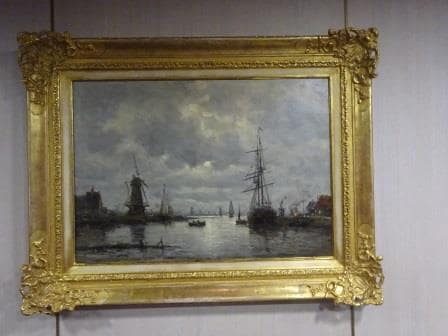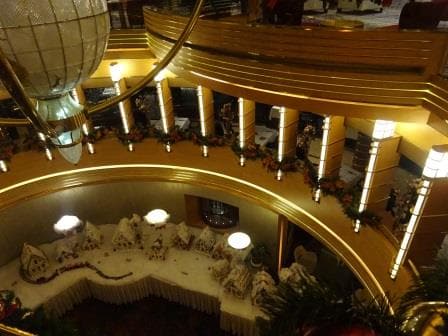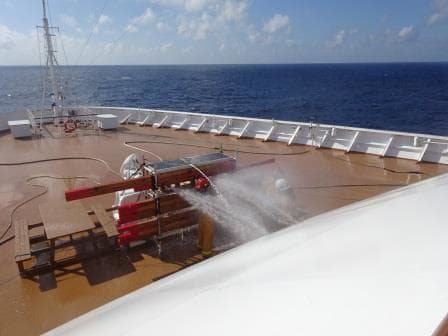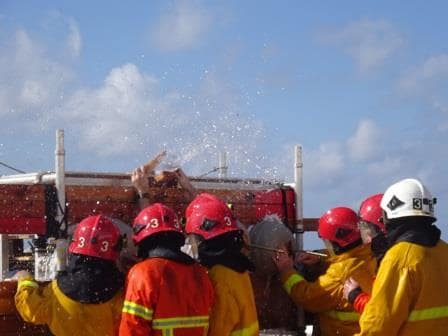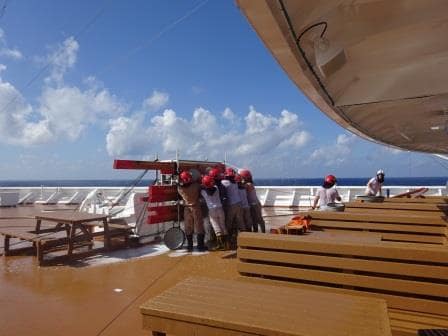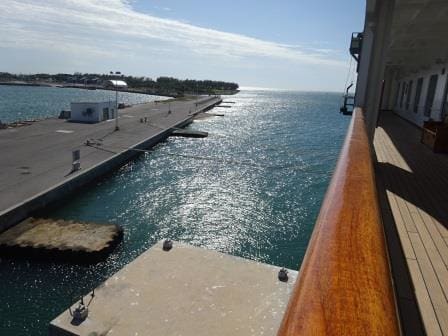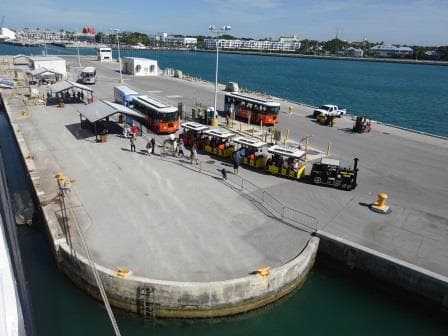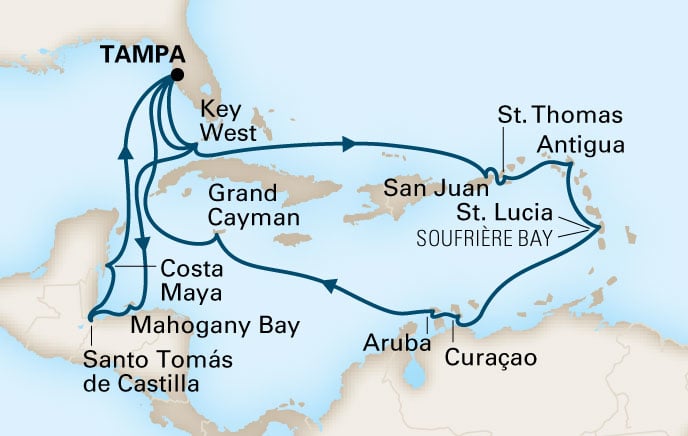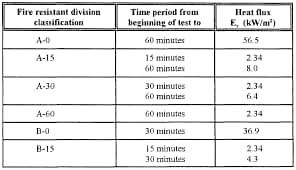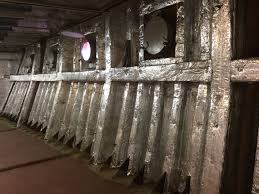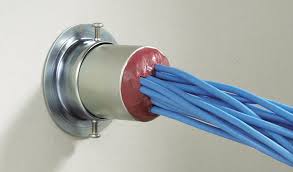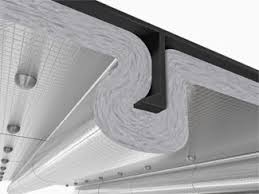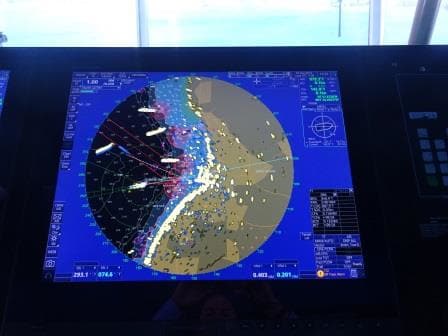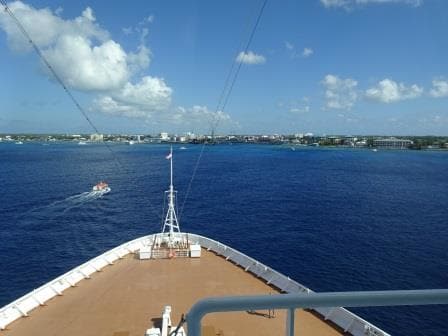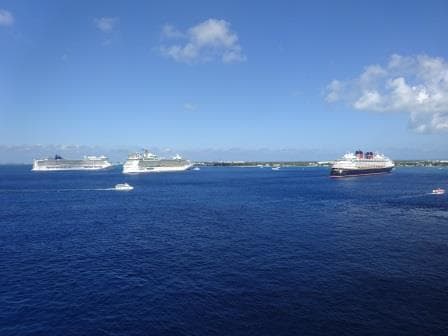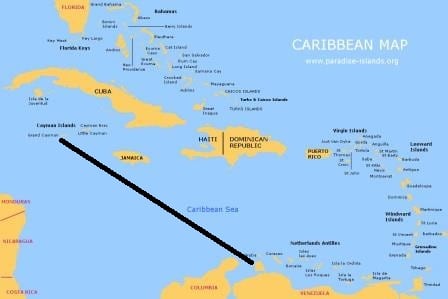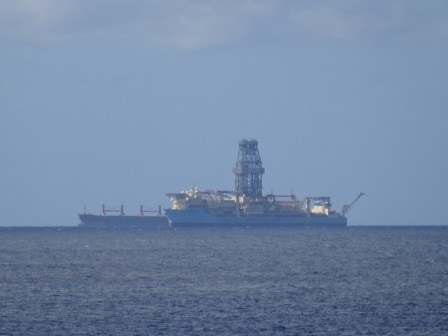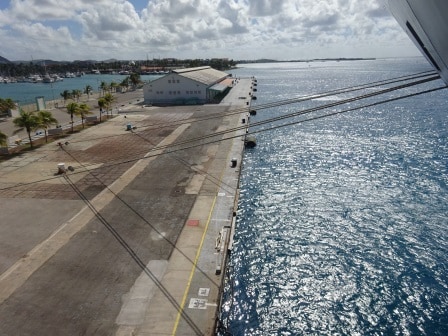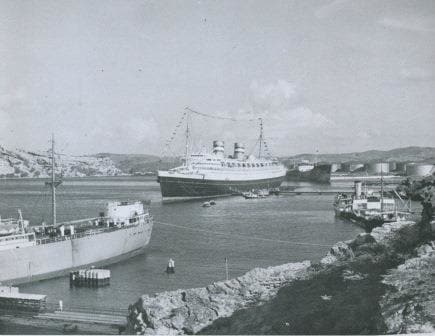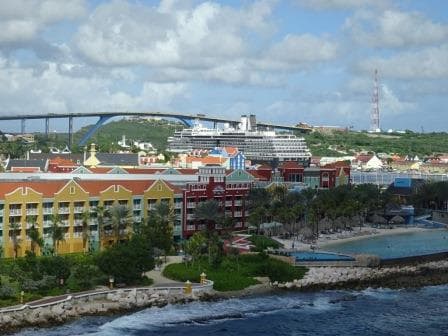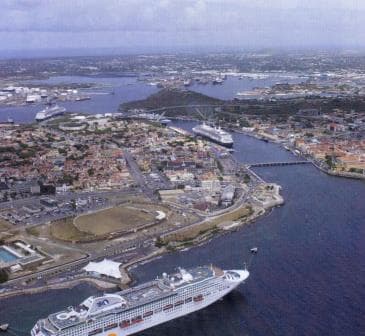Santo Tomas is one of those places were a canal would make the distance a lot shorter even if the distance between Roatan and Santo Tomas is only 142 miles. This is basically caused by the fact that the town is located inside a deep bay. The land is curved around it and protects the whole area from being exposed to the open Caribbean. So while we sail almost straight west from Roatan, most of that straight sailing is above land to reach the bay. Then the ship has to curve back until finally it can go south towards the dock. Just before you enter the bay the curve of protecting land is not very wide and thus a little cut –through would be possible. But looking at it economically the total traffic of ships which call at Puerto Barrios and Santo Tomas is probably not sufficient to even contemplate it.
As mentioned in my blog of the previous call, the guests here either go on tour or just wander into the terminal or visit the local town. For the latter there is a shuttle trolley service which leaves from the gangway. From the crew only those who have never been here before might go to the local town but all others who have bought the T shirt already normally stay on board. Unless shorex can organize a shuttle boat/ferry to the Amatique beach resort which is sometimes possible if the guests have not bought up all the tickets. But it is six hour happening and apart from concessions and entertainment not many crew have time to do it.
Certainly not when I am around and I have dreamt up yet another major training. This time on request of the engine department. Enclosed Space Rescues. The engine department often has to inspect, clean or repair tanks and these are not known to be easily accessible or easy to work in. Thus if an accident would occur it is also very hard to get the casualty out. To do an efficient tank extraction you have to train as it is a lot more difficult than it seems. Training in a real tank itself is not so easy as one has to be opened up and also nobody can see what is going on and learn from it as there is most of the time no room to stand around. To alleviate the problem of the very few being able to see something, it is better if we build a sort of mock up in an open space.
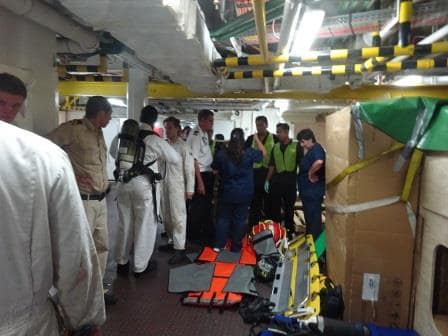
A medical equipment on standby and the medical officers giving instruction to the stretcher bearers.
And thus with the aid of the five cadets on board I designed and constructed a complete tank in the Marshalling area; the open space in the ship where we normally handle the luggage and the provisions that come on board. With carton boxes, canvas, the luggage bins and some wood it was good enough for a good drill. The engineers sharpened their skills again and medical could now observe from close by what a ships tank looked like and how difficult it is to get a casualty out as the inside of a tank is normally web constructed which is needed for the strength of the ship.
We have of course equipment on board to help with this but you have to exercise this to ensure that all the pieces of the puzzle fit together if something would happen. Enclosed space incidents are still very common in the industry and not only at sea. Workers who do not realize that in a tank there might lack of oxygen or all sorts of gasses and the work surface is seldom ideal. Thus the regulations before we can enter a tank are very strict to ensure that those who go in also come out again. A lot of extra casualties are caused because workers see a collapsed colleague inside and run in to help. Which only results in yet another casualty. Hence nobody goes into a tank for rescue and extraction without wearing breathing apparatus. The bottle on your back is very cumbersome when getting in and out but it is a life saver. We also have oxygen masks connected with a long hose to a bottle which can then remain outside but then you still need somebody else to watch over that hose so it does not get stuck behind something.
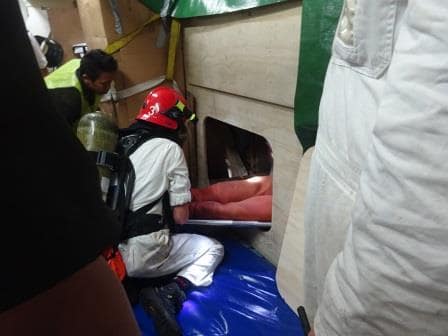
The casualty coming out. The opening is the average man hole size of a real tank. (some are a lot smaller)
Tomorrow we are in Costa Maya which lies 180 miles to the North from Santo Tomas and which will be our final call for this cruise. It should be a full house tomorrow with all the three berths occupied; the ms Oosterdam, the Rhapsody of the Seas and the Norwegian Jade. Weather: partly cloudy skies, 80oF / 26oC and a gentle breeze. So it will be a warm day there.
